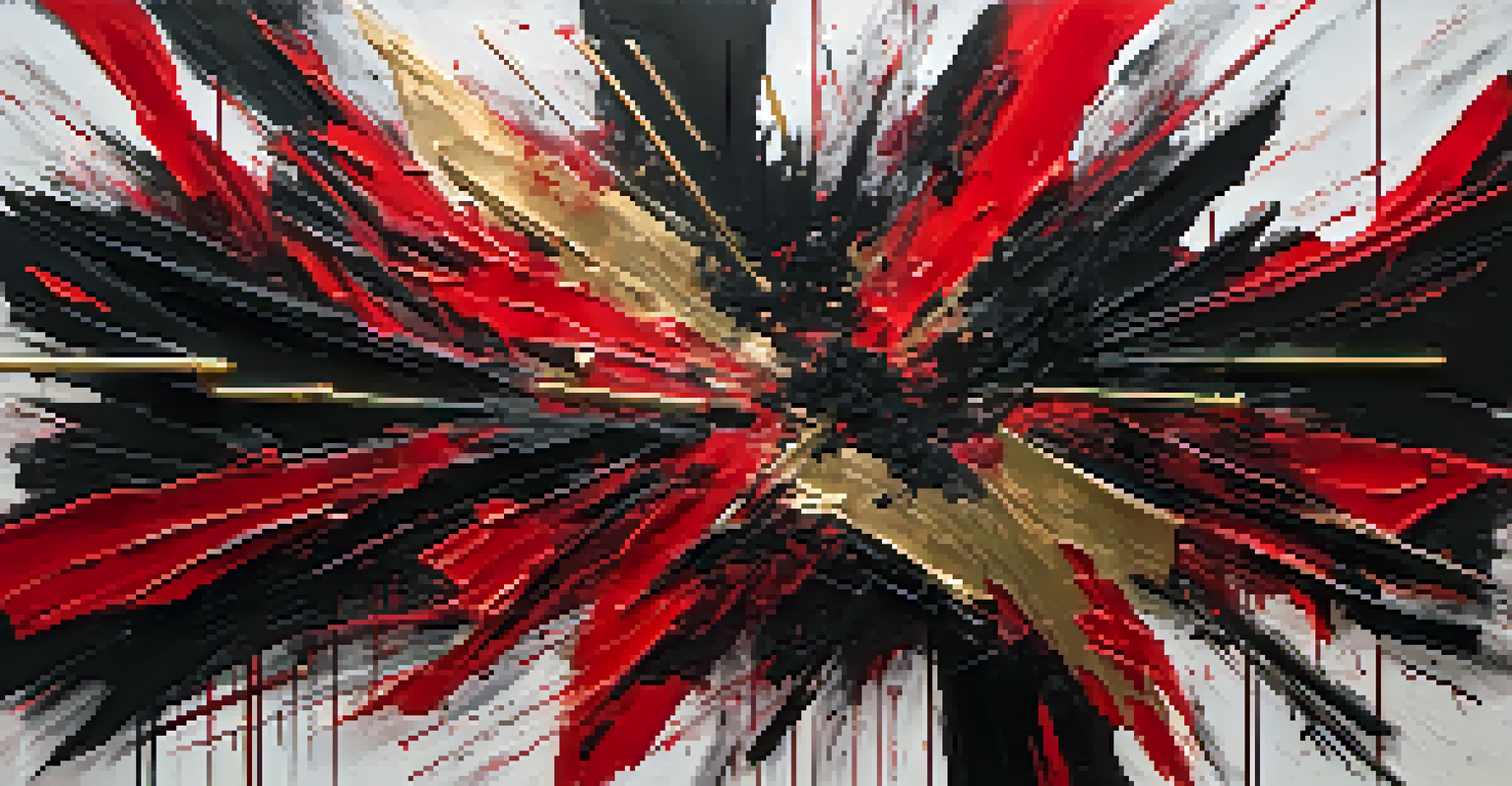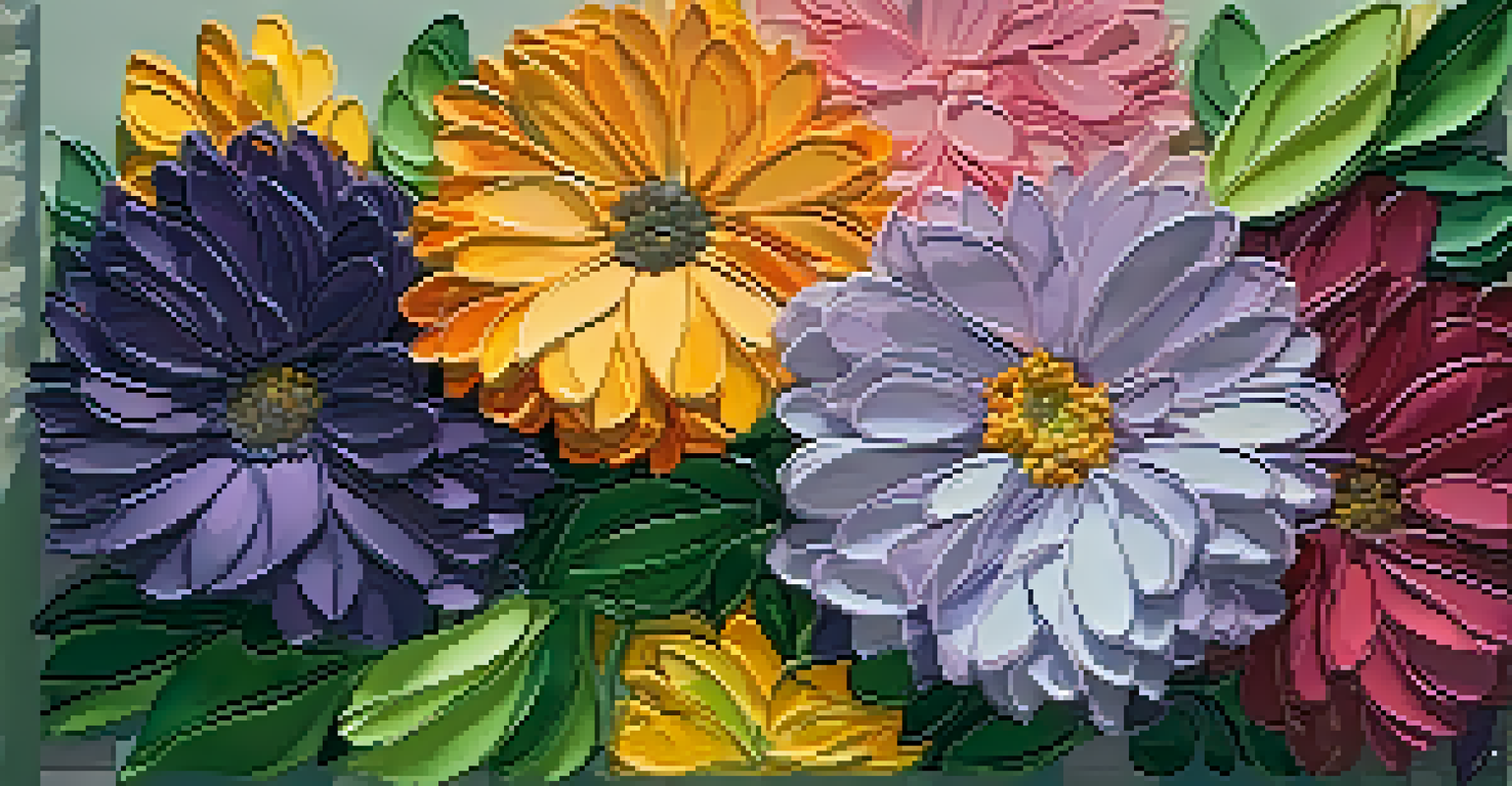Brushed Emotions: How Technique Shapes Artistic Expression

Understanding Brushed Emotions in Art
Brushed emotions refer to the feelings conveyed through artistic techniques. Just as a musician uses notes to express a melody, artists use brush strokes and colors to evoke emotions. This interplay between technique and feeling creates a unique language that can resonate deeply with viewers.
Art is the most beautiful of all lies.
Each stroke of the brush can carry its own weight, from the softness of a gentle caress to the harshness of a bold declaration. Artists often choose their techniques based on the emotions they wish to evoke, making the choice of brushstroke as critical as the choice of color. This connection between technique and emotion is what makes art such a powerful medium.
For example, consider the difference between a smooth, sweeping stroke versus a jagged, erratic one. The former might evoke tranquility, while the latter could suggest chaos or tension. Understanding this relationship enhances our appreciation of art, allowing us to connect with the emotions embedded in each piece.
The Role of Technique in Artistic Expression
Technique serves as a bridge between an artist's vision and the viewer's interpretation. Whether it's the choice of medium—like oil, acrylic, or watercolor—or the application method, each decision shapes the final expression. For artists, mastering these techniques is essential to convey their intended emotions effectively.

In painting, for instance, layering can create depth and complexity, while a single, bold stroke can deliver a powerful statement. This versatility allows artists to manipulate emotions, guiding the viewer through a visual journey. The technique is not just a tool; it is an integral part of storytelling in art.
Emotions Conveyed Through Technique
Artistic techniques, such as brush strokes and color choices, play a crucial role in conveying emotions and enhancing viewer engagement.
Think about how impressionist painters use quick, short strokes to capture the fleeting effects of light and movement. This technique invites viewers to feel the vibrancy of a scene rather than just see it. Understanding these nuances enriches our experience and appreciation of artistic expression.
Color Choice and Emotional Resonance
Color plays a crucial role in how emotions are expressed in art. Different colors can evoke different feelings; for example, blue might evoke calmness, while red can signify passion or anger. Artists carefully select colors not just for their aesthetic appeal but for their emotional impact.
The painter tries to master color, but color is a wild beast that cannot be tamed.
When combined with technique, color can enhance the mood of a piece dramatically. A soft pastel palette can create a serene atmosphere, while bold, contrasting colors can generate excitement or tension. This orchestration of color and technique is essential in crafting artworks that resonate with viewers.
Consider how a sunset painting, with its warm oranges and cool purples, can evoke feelings of nostalgia or tranquility. The emotional response is heightened by both the color choices and the brush techniques used to convey the light and movement of the scene. This synergy is what makes art deeply personal and universally relatable.
The Impact of Texture on Emotional Experience
Texture adds another layer of emotion to artistic expression, influencing how we perceive a piece. Artists can create texture through various techniques, including layering paint, using different brushes, or even adding materials like sand or fabric. This tangible quality can evoke feelings such as warmth, discomfort, or intrigue.
For example, a thick, impasto technique might suggest intensity and passion, while a smooth finish could imply calmness and serenity. This physical dimension invites viewers to engage more deeply, prompting them to touch and explore the artwork—if allowed—creating a multi-sensory experience.
Color's Emotional Influence
The selection of colors in art profoundly affects emotional resonance, with different hues evoking distinct feelings in the viewer.
Imagine running your fingers across a heavily textured canvas; the experience is as much about touch as it is about sight. This tactile element can make emotions more visceral and immediate, deepening our connection to the artwork and its intended message.
Symbolism and Technique: A Delicate Balance
Symbolism in art often relies on technique to communicate deeper meanings. Artists frequently use specific techniques to enhance the symbolism within their work, creating layers of interpretation. This relationship can transform a simple image into a powerful narrative, rich with emotional significance.
For instance, a broken mirror in a painting might symbolize shattered dreams, and the technique used to depict the mirror—whether smooth or jagged—can amplify this message. The choice of technique not only highlights the symbol but also guides the viewer’s emotional response.
When we recognize this interplay, we begin to see art as a dialogue rather than a monologue. The artist speaks through their chosen symbols and techniques, inviting us to listen and engage with the emotions behind each piece. This dynamic enriches our understanding of artistic expression.
The Artist's Journey: Experimentation and Growth
Every artist embarks on a journey of experimentation, discovering how different techniques can shape their emotional expression. This process often involves trial and error, where artists push boundaries to find their unique voice. As they explore various methods and styles, they learn to express their emotions more authentically.
For instance, an artist may start with traditional techniques but gradually venture into abstract styles, uncovering new ways to convey feelings. This evolution is a vital part of their artistic growth, allowing them to connect more deeply with their audience. Each phase of experimentation contributes to their overall artistic narrative.
Texture Enhances Emotional Depth
Texture adds a tactile dimension to art, influencing emotional perception and inviting deeper viewer interaction.
Think of this journey as a dance between technique and emotion, where each step reveals new possibilities. As artists refine their skills, they become more adept at using their techniques to evoke complex emotions, ultimately leading to a richer, more impactful body of work.
Connecting with Viewers: The Emotional Impact of Technique
The ultimate goal of artistic expression is to connect with viewers on an emotional level. When artists skillfully employ techniques that resonate with their feelings, they invite the audience to share in their experience. This connection transforms a simple viewing into a shared emotional journey.
For example, a powerful portrait that captures the sorrow in a subject's eyes can evoke empathy and reflection in the viewer. The techniques used to portray those emotions—like the choice of lighting or the softness of the brushwork—can enhance the viewer's emotional engagement. This is where art transcends mere visuals and becomes a means of connection.

As we engage with art, we often find pieces that resonate with our own experiences and emotions. This shared connection is what makes art timeless and universal, bridging gaps between artist and viewer. Through technique, artists can create a lasting emotional impact, making their work memorable and meaningful.